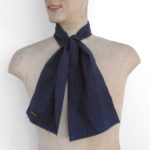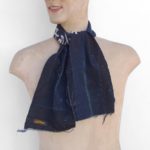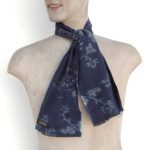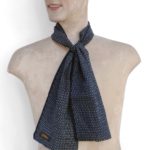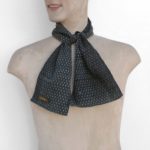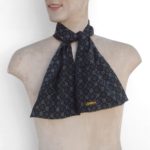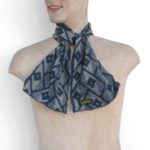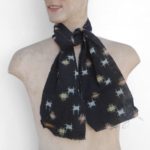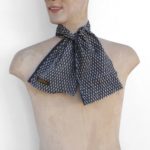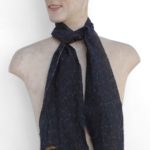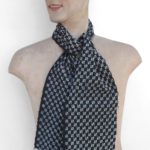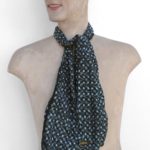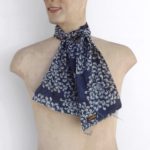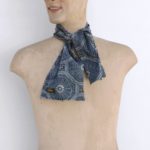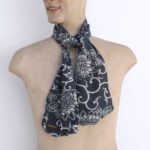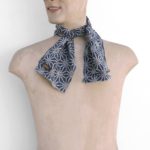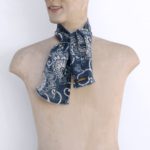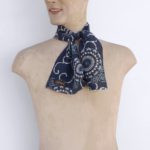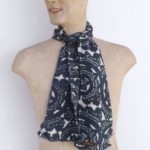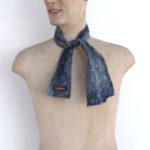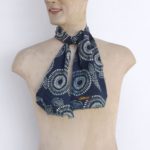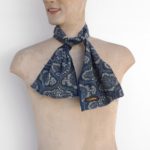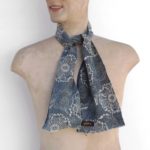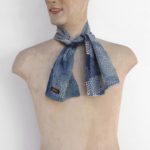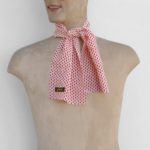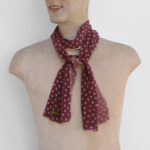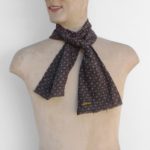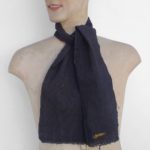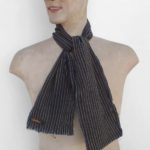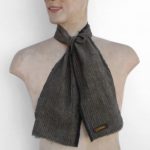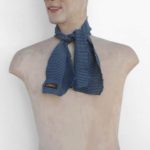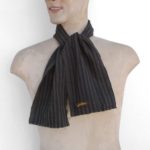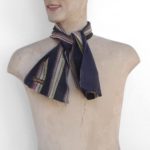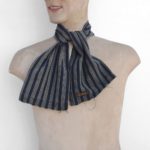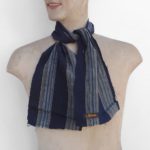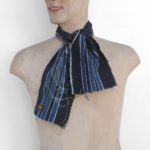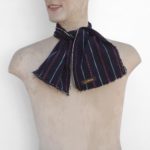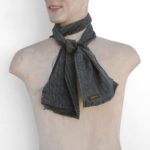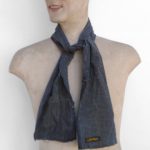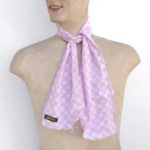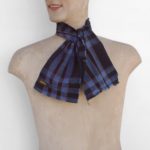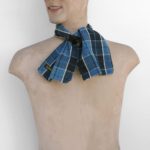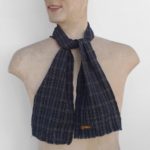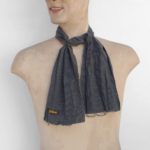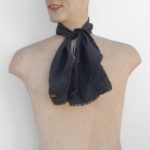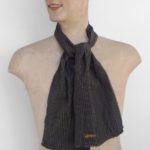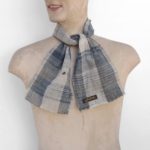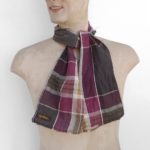 












 
-

-

-

-

-

-

-

-

-
MF® Chemise Marina also available in red.
-

-
MF® Chemise Marina also available in black.
-

-
MF® Chemise Marina also available in white.
Mister Freedom® Chemise “MARINA”, Cotton Pique, Indigo Blue & Daffodil Yellow edition.
SS2020 mfsc “YUCATÁN” collection.
Made in Japan.
Our recurring “YUCATÁN” capsule collection concept was previously introduced during Spring 2019, with the Californian Lot.674 Piqué release.
The vibe of that menswear venture is sporty, racy, with a touch of sixties-beachcomber-meets-desert-rat. It is a concise, full-throttle yet-unassuming contemporary collection for grown-ups who have a penchant for classic designs.
The following bit, our take on a slice of costume history, was previously shared in the original post, but the MF® Chemise “MARINA” is our humble twist on the traditional “polo shirt” pattern, so called due to its initial association with the ancient sport of polo. The activity of polo, the “Sport of Kings”, was imported by the Brits in the mid 1800’s, from Manipur, India. Along came the buttoned-down collar style of shirts sported by the local teams of horsemen. This classic garment’s history gets confusing since the term “polo shirt” evolved over time to encompass differing styles.
In the 1890’s, Brooks Brothers introduced its own original so-called “Polo Shirt”, in oxford cotton. That formal design is known today as the “Button-Down” shirt, an office favorite. Brooks Brothers’ specimen, which used to be Made in USA, can be recognized by their embroidered Golden Fleece chest logo.
In the 1920’s, French tennis player René Lacoste thought of revamping the impractical attire of his own sport of choice, white slacks and starched white shirts. His original design was a pull-over shirt in cotton piqué knit, featuring short sleeves with ribbed cuffs molding to the biceps, a rib knit collar that could be flipped-up to protect from the sun, and a “tennis tail”, a longer back panel to prevent untucking while playing.
His sporty design became the “Chemise Lacoste”, establishing the traditional pattern of the tennis shirt, or “polo” style, as it is commonly referred-to today. It rapidly spread to other sports, from golf courses to marinas, becoming a staple of casual menswear.
In the early 1970’s, Ralph Lauren introduced his own “Polo shirt”, pitching its galloping player against the hissing crocodile, adding to the confusion with the “polo” vs. “Polo” terminology, but cementing the design into its contemporary preppy demeanor.
As a casual, sporty, comfortable yet elegant, versatile and time-tested garment, polos were adopted by many stylish men through the years. Period photos abound: a young Steve McQueen hanging, Sean Connery bonding, JFK yachting, Clint Eastwood parroting…
If Fedex® and Pizza Hut® also offer their own versions of chest-branded polos today, it is in the popular 1950’s and 1960’s styles that we found inspiration for the Mister Freedom® Chemise “MARINA”.
Our ribbed knit underarm expansion gusset is a familiar classic design detail lifted off vintage sportswear polos, but the choice of chest logo took a little longer to come-up with. We’d seen them all, embroideries or patches: the entire Noah’s Ark (from tigers to dragons), wreaths, golf bags, trophies, umbrellas, skulls, mounted knights, crowns, anchors, cartoon characters, monograms, plain DBA’s, … some more clever than others.
We were aiming for something unique yet classic, elegant yet somewhat witty, unpretentious yet enticing, maybe with a nautical flair?.. We definitely wanted to stay clear from pure in-your-face branding, and picking another animal from the zoo didn’t cut it.
So, after days at the drawing board, we eventually settled on a maritime signal flag gimmick! Diagonal white cross on blue background is international naval code for Mike, the letter “M”. Red diamond on white background is Foxtrot, “F”. Serendipitously, an hoisted Mike flag warns “our vessel is not moving”, and a Foxtrot flag signals “we are disabled”.
In other words, “Sacré bleu! HELP!” The MF® Design Department was adamant that such semiotics would most effectively convey an earnest and reliable brand image.
The MF® Chemise “MARINA” was initially released in three classic color options: red, black, and white cotton piqué. For FW, we are introducing an indigo blue and a daffodil yellow version.
The Chemise “MARINA” is designed in California by Mister Freedom® and manufactured in Japan by Sugar Cane Co.
SPECS:
FABRIC:
Fine 100% cotton knit piqué, soft and light-weight, milled in Japan.
Two new color options for SS2020:
a) Indigo Blue (genuine vat-dyed indigo).
b) Daffodil Yellow.
DETAILS:
* An mfsc pattern inspired by classic 1950’s-1960’s “tennis” or “polo” type shirts.
* Piqué knit body.
* Original Mister Freedom® “MF 7161” maritime signal flag embroidered chest logo patch.
* Rib knit underarm expansion gusset.
* Versatile ribbed collar.
* Short sleeves with ribbed cuffs.
* Side slits with HBT tape reinforcement construction.
* Subtle “Tennis tail” (1 ½ inch difference between front and back length.)
* Genuine Nacre (Mother of Pearl) fancy buttons.
* Original Mister Freedom® mfsc “Chemise MARINA” rayon woven neck label.
* Made in Japan.
SIZING/FIT:
All color options of the Chemise “MARINA” come pre-rinsed and tumble-dried.
The shirts are therefore pre-shrunk and ready-to-wear. These feature more of a ‘vintage’ silhouette than your average contemporary polo shirts.
I went for a Medium with the Chemise “MARINA”, with a comfortable fit.
For info, I usually opt for Small in Mister Freedom® knitwear – Stanleys and Skivvies, Tricot Marin, GI Henley – due to a subjective preference for old-school silhouettes rather than contemporary streetwear vibes.
The cotton pique knit body has quite a mechanical stretch (the fabric naturally stretches if you pull on it), but will pretty much recover and retain its initial shape.
Please refer to sizing chart, reflecting fully-rinse and tumble-dried measurements. All shirts come pre-shrunk.
CHART
CARE:
Wash when necessary.
Hand-wash or machine wash with cold water, gentle cycle, eco-friendly mild detergent and line dry.
Consider the Chemise “MARINA” as a delicate garment, and do not launder with clothing containing sharp hardware (metal buttons, metal zippers, hooks,…) to avoid snagging the pique knit fabric and overall damage to the shirt.
Available rinsed/pre-shrunk.
Color options: Indigo Blue or Daffodil Yellow.
Sizes
Small (14-14½)
Medium (15-15½)
Large (16-16½)
X-Large (17-17½)
XX-Large (18-18½)
Available from www.misterfreedom.com, our Los Angeles brick & mortar store when it re-opens, and fine retailers around the World.
Email sales@misterfreedom.com with any questions unanswered above.
Thank you for your support and stay safe.
Christophe Loiron
Mister Freedom®
©2020
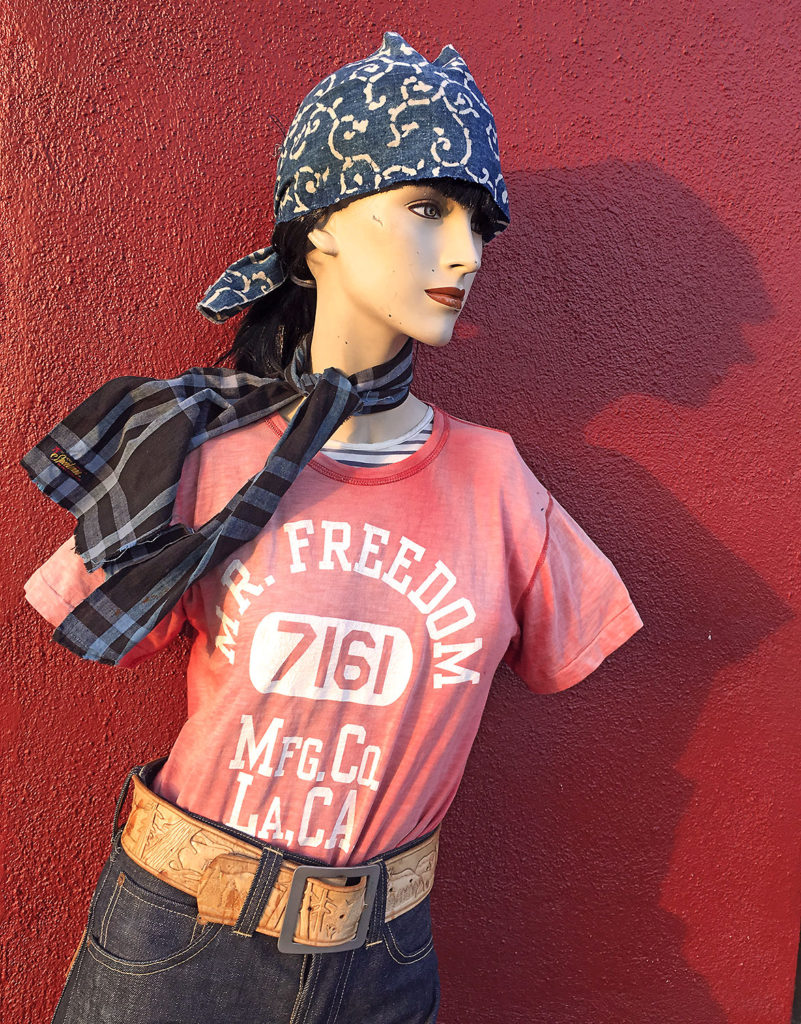

“Aizume” selection:
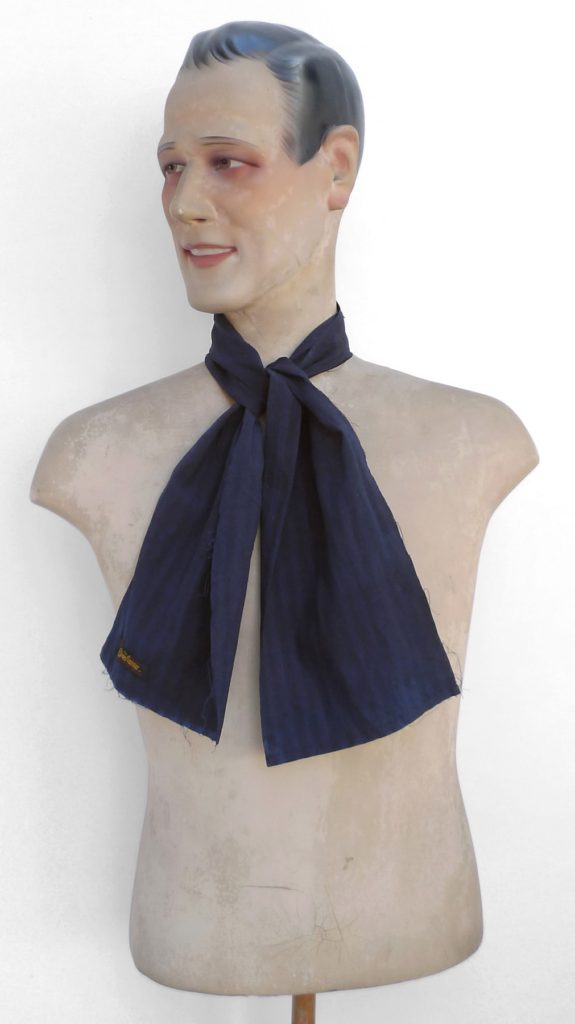 Mister Freedom® Boro Shorties (Aizume) “Kasuri” selection:
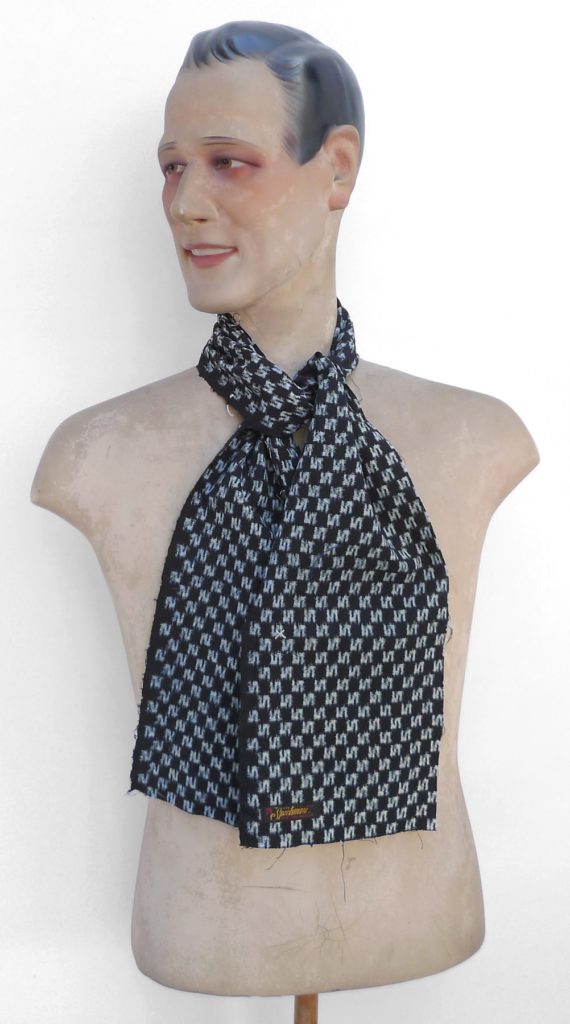 Mister Freedom® Boro Shorties (Kasuri) “Katazome” selection:
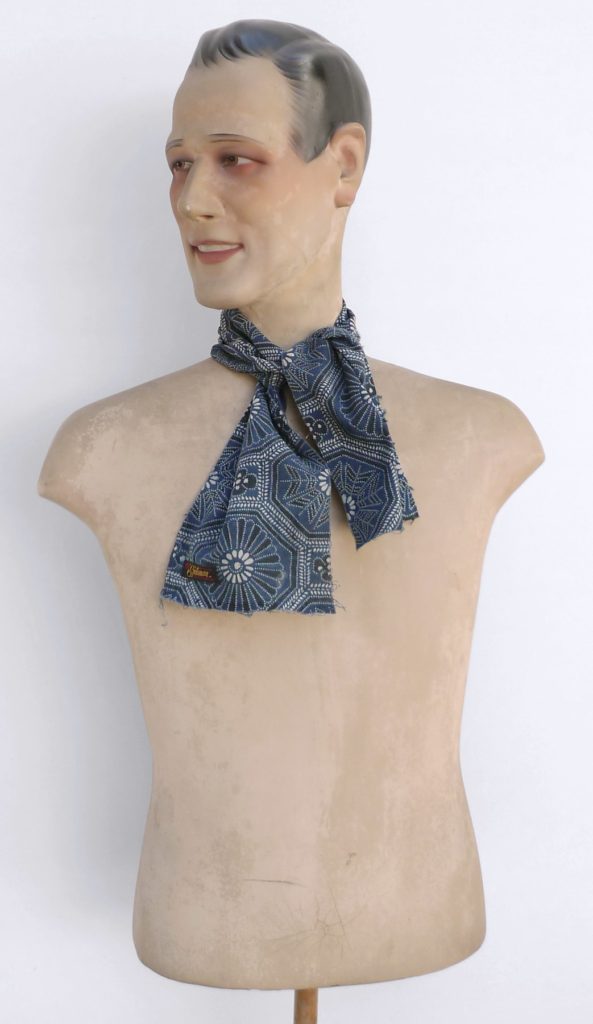 Mister Freedom® Boro Shorties (Katazome) “Nihon” selection:
 Mister Freedom® Boro Shorties (Nihon) “Stripes” selection:
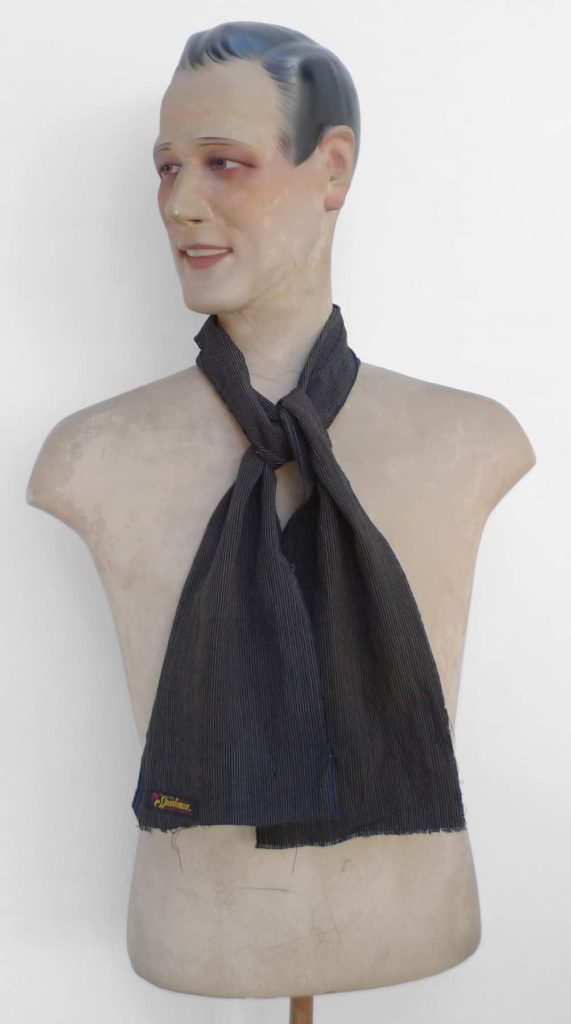 Mister Freedom® Boro Shorties (Stripes) “Checks” selection:
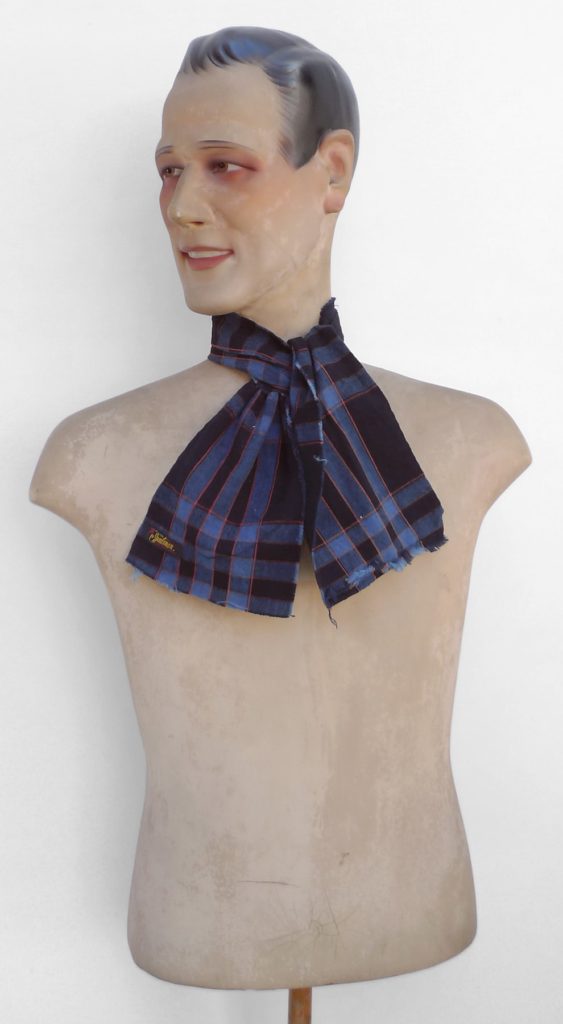 Mister Freedom® Boro Shorties (Checks)
Mister Freedom® “BORO SHORTIES”, assorted antique Japanese textiles.
Up-cycled in USA.
April 2020 inventory update.
Here is an overdue inventory update of the Mister Freedom® Boro Shorties. These are the shorter version of our Indigo Boro Ties, initially introduced in 2011, all made from antique textiles traditionally milled in Japan in the 20th Century. Their vintage ranges from early 1900’s to the 1960′s. These narrow shuttle loom fabrics feature assorted patterns, textures and colors, all one side selvedge and the other side frayed. They are a mixture of home spun, cotton, hemp, natural indigo, katazome prints, kasuri weave, plaids, solids. Each scarf is unique and one of a kind.
The condition of some of these fabrics are beyond the wabi-sabi of a little imperfection, and feature fraying, occasional holes, repairs, fragile spots, etc…As the fabric continues to age with wear, your own hand-made repairs will add character.
Although the MF® Boro Shorties all vary from one another, with specific fade/condition/size/length/repairs/holes/yellowing due to age, we loosely classified them by textile family groups (there are obvious cross-references):
* Boro Shorties Aizume: mostly solid indigoes.
* Boro Shorties Kasuri: fiber-dyed woven patterns.
* Boro Shorties Katazome: resist-paste dyeing.
* Boro Shorties Nihon: Miscellaneous Japanese patterns.
* Boro Shorties Stripes: striped patterns.
* Boro Shorties Checks: Check/plaid patterns.
Style: Wrapped once around the neck with a simple single knot, they’ll work with different outfits, dressed up or down, worn out or tucked inside the shirt, ascot-style, bolo tie-style or á-la J. Depp. We do insist on the ‘rough and rugged’ nature of these scarves, as this is not Brooks Bros neckwear. Think “Salaire de la Peur” rather than “The Great Gatsby“. For additional info and photos, please refer to the original release 2013 blog post, the June 2017 update and Dec 2017 update.
The Mister Freedom® “Boro Shorties” are up-cycled in USA, and made from antique textiles loomed in Japan.
This new selection is available from www.misterfreedom.com (inventory to be updated asap.)
Email sales@misterfreedom.com with any questions unanswered above.
Thank you for your support, and stay safe.
Christophe Loiron
Mister Freedom®
©2020

 











Mister Freedom® “MERIDANA” Shirt, Indigo Linen & Oatmeal Chambray Hemp/Linen/Cotton (50/25/25).
SS2020 mfsc YUCATÁN Collection.
Made in Japan.
Visitors of the ol’ MF® pile o’ rags know they can always count on a curated vintage selection of “South of The Border” textiles and garb from the Americas, like hand-woven Guatemalan huipiles, embroidered campesina blouses, vegetable-dye wool Mexican serapes, Caribbean-print tourist shirts… and, of course, old Guayaberas. The rare vintage specimen we score get snapped-up quite quickly at our store, and I always have my radar on while rag picking. I can’t pass in front of a rack of used, contemporary shortsleeved poly-cotton Guayaberas (a common feature of California ‘vintage’ stores and markets) without scoping the selection for an OG, an abuelo, an elusive all-cotton 50’s-60’s hidden specimen! It’s always a thrill when one pops-up, and a ¡Caramba! usually follows.
As with most iconic designs rooted in 19th Century traditional clothing, old folklore and history, the Guayabera’s tale remains unclear even for costume scholars. Its disputed origins are found in Cuba (a Spanish military garment was apparently called Guayabera, and the Guayabana was sported by guava farmers…), the Dominican Republic (the traditional chacabana), Spain, and Mexico via the Philippines (the barong shirt)…
The HistoryMiami Museum held an exhibition in 2012, with research leading to interesting conjectures and displayed artifacts.
In Mexico, the style is sometimes referred to as camiseta de Yucatán (Yucatán shirt), making it quite an inevitable fitting candidate for one of our Mister Freedom® SS2020 mfsc line-up, a capsule collection called Yucatán, initially introduced during Spring 2019.
The design of our shirt is heavily inspired by a vintage 1950’s specimen from our archives, sporting an obscure “Meridana” label that read: “Hecho en Mexico, Merida, Yuc.” That original white cotton shirt (made in Mérida, capital city of Yucatán State, Mexico) had all the bells and whistle of traditional Guayaberas: the characteristic four patch pockets, front and back tiny pleats (alforza), arcuate shoulder and bottom yoke, side vents, and enough decorative buttons to set-up a notion store.

On a side costume history note, it is believed that the famous pointy “western yoke” familiar to all western-wear aficionados actually finds its origin in the guayabera shirts allegedly sported by 1800’s Mexican vaqueros and rancheros, whose horsemanship, cultural heritage, and style are known to have influenced the American cowboy. If this is true, the arcuate is more likely to have come from Spain, as the scalloped yoke is not an uncommon feature of vintage European clothing from the period.
Back to our Guayabera. If we kept the overall vibe and essence of that vintage shirt for our humble fashion interpretation, we decided to replace the tight rows of stitched vertical pleats (called alforza, and by the intricacy of which the status of quality tailoring traditionally depends) by appliqué panels, racing-style, respectfully leaving the title of “King of the Guayabera” to Señor Ramón Puig, while we stick to the dune buggy fever flavor of our theme.
We added a 1950’s style “loop” collar, no top stitch, typical of early models and classic open collar mid-century sport shirts.
For front closure, we tried sourcing-out the classic Mexican “souvenir shirts” oblong grooved buttons, but to no avail. Couldn’t even figure-out what they are called. So we had a limited batch custom-made and replicated from a vintage specimen, opting for actual ox bone material instead of the usual plastic. As these have to be attached by hand, not machine, they might have to be re-stitched occasionally, a minor operation accessible to anyone who can thread a needle, not a bad skill to acquire for anyone who finds benefits in prolonging the life of a garment, rather than discarding it.
Our MERIDANA would be good practice over time, as it features twenty-eight (!) buttons, a combination of two styles: the oblong hand-sewn ones aforementioned, and a vintage 1930’s new old stock model of Portuguese manufacture from our archives, also made from ox bone. We still had a few boxes from our 2012 Prairie Shirt production…
The fabrics we opted for are new to the world of traditional Guayaberas, as far as we know. We are introducing our MERIDANA in a beautiful indigo-dyed fine linen, quite similar to the fabric of the MF® Liquette M35. The second option is a métisse oatmeal selvedge selvedge chambray, a fancy mid-weight blend of 50% hemp, 25% linen and 25% cotton. Both fabrics drape very differently, but have the classic crispiness and wrinkly quality associated with linen/hemp fibers.
Style-wise, these untucked tropical shirts are quite versatile. Our MERIDANA can be paired with dressy gents’ trousers, cool Californian colored jeans or blue jeans, chinos, vintage slacks… eventually complimented by a pair of huaraches (the traditional Mexican ones, not the made-in-China Swoosh brand stuff) or Spanish/French espadrilles. And a Panama hat for good measure.
Visual inspiration abound, the classic 1956 shots of Papa Hemingway with buddy Gary Cooper in Cuba, Phil Stern’s photos of the Duke in Acapulco circa 1947 (some with Cooper again, apparently sold on the style!), and countless other old snapshots of cool dudes.
The mfsc MERIDANA is designed in California by Mister Freedom®, and manufactured in Japan by Sugar Cane Co., from fabrics milled in Japan.
GARMENT SPECS:
PATTERN:
Inspired by traditional Guayabera-type shirts and other vintage tropical garments, revisited with a 1940’s-1950’s twist.
FABRICS:
Two distinct options:
a) Dark indigo-dyed plain weave, 100% linen, lightweight and breezy, milled in Japan.
Note: This indigo fabric is prone to “bleeding” (color transfer) and is very light sensitive. The indigo color will rub-off on lighter colored fabrics, skin, and furniture. Exposure to the sun will rapidly alter the indigo blue hues, and the shirt should be stored away from sunlight.
b) Mid-weight métisse oatmeal selvedge chambray, very slubby blend of 50% hemp, 25% linen and 25% cotton, milled in Japan.
DETAILS:
* Vintage-style tailoring and styling.
* Elegant long-sleeve model.
* Four front patch pockets.
* Vertical stitched-down paneling strips, racing style, front and back.
* Buttoned side slits.
* Attractive arcuate shoulder yoke, bottom hem, and pocket yokes.
* Genuine ox-bone Mexican “souvenir shirt” traditional oblong buttons.
* Decorative vintage NOS ox-bone 1920’s classic buttons.
* Combination of 28 functional and decorative buttons.
* 1950’s-style “loop” open collar pattern, no top stitch.
* Original mfsc “YUCATÁN” woven rayon label.
* Made in Japan.
SIZING/FIT:
Both fabric options of the MF® “MERIDANA” come raw/un-rinsed.
We recommend the usual protocol before wearing:
* Cold soak for about 30-40mn, with occasional hand agitation.
* Spin dry and line dry (not in full sun for the indigo version.)
Both versions will fit approximately the same following the above procedure. Both indigo linen and oatmeal chambray fabrics are so distinct in texture, weight and drape that they will feel quite different, but technically fit the same. The chambray tends to have a bit more mechanical stretch, due to the looser weave. The classic crispiness and wrinkly quality associated with linen/hemp fibers is expected and normal.
I am usually a Medium (15½) in mfsc shirting, and I opted for a comfortable Medium in both fabric options. The fit picture features a Medium in both fabrics after one cold soak/line dry, and a bit more shrinkage and fabric torque/puckering might be expected down the line.
We recommend matching the measurements below to a shirt you own, of similar untuck and comfortable style, in order to figure which size will work best for you. For reference, this is how we measure our garments.
When using a cloth measuring tape, make sure the tape has not stretched overtime and is accurate.
 
CARE:
Launder when needed.
a) Indigo linen model: Fully un-button before laundering. Treat as a delicate fancy shirt. Hand wash recommenced, or machine wash on gentle cycle, cold water, minimum eco-friendly mild detergent and line dry.
Attractive patina will potentially develop according to activities and frequency of wear.
Note: This indigo fabric is prone to “bleeding” (color transfer) and is very light sensitive. The indigo color will rub-off on lighter colored fabrics, skin, and furniture. Exposure to the sun will rapidly alter the indigo blue hues, and the shirt should be stored away from sunlight.
b) Oatmeal hemp chambray model: Fully un-button before laundering. Treat as a delicate fancy shirt. Hand wash recommenced, or machine wash on gentle cycle, cold water, minimum eco-friendly mild detergent and line dry.
Available RAW/unwashed.
SIZES:
14½ (Small)
15½ (Medium)
16½ (Large)
17½ (X-Large)
18½ (XX-Large)
Available from our Los Angeles brick & mortar HQ, from www.misterfreedom.com, and fine retailers around the World.
Email sales@misterfreedom.com or call 323-653-2014 with any questions unanswered above.
Thank you for your support, and stay safe.
Christophe Loiron
Mister Freedom®
©2020


 








Mister Freedom® “Le Parisien” Continental two-piece suit (Sportcoat & Trousers)
Mock Twist stripe twill edition.
SS2020 mfsc “Sportsman” catalog.
Made in USA.
Sometime in 2019, we reached out to our friends and classics’ replica specialists at Toyo Enterprises and submitted a vintage fabric swatch cut from a 1920’s-30’s pair of French work trousers. After studying each yarn of the intricate weave under a microscope (textile expert Arai San literally does that), instructions and tech-pack were given to a Japanese fabric mill to replicate the challenging textile…
The result is the magnifique selvedge Mock-Twist stripe twill of our “Le Parisien”!
Mock twist refers to the twisted white and black yarns giving the “salt & pepper” (or covert) aspect to the twill, with its specific vintage French workwear characteristics. Fancy striped patterns were quite typical of 1920’s-40’s French utilitarian clothing, maybe an attempt to add a bit of “chic” to blue collar outfits, and a touch of “mode de la ville” (city fashion) to rural dwellers? Period menswear catalogs and vintage swatch books document the wide variety of stripe woven fabric patterns available at the time, eye candy for the textile collector.
Today, these bold stripes may be more associated with “The Godfather” than with hard-working farmers, but the versatility of these washable cotton fabrics – suitable for both field work and as Sunday attire – , along with their sturdiness, might have been the reason of their popularity with the working class.
Significant amounts of new-old-stock workwear were still sitting on store shelves in France up until fairly recently. The old guard of French vintage pickers and theater costumers will remember a specific Army-Navy surplus store on the docks in Bordeaux, France, with stacks and stacks of NOS workwear, in all kinds of stripe twills or black/blue moleskine, just sitting there and gathering dust… My Dad had taken me to that specific store in the 1970’s-80’s, to stock-up on new blue jeans and old useful military gear, and I, of course, have been back and raided the place several times since. There were surprisingly still piles of dead-stock oldies and random goodies as-of my last visit in 2017. The lady still running the shop remembered my Dad. He was a charmer…
This original trousers/sportcoat set is the latest addition to the Mister Freedom® Continental family, an all made-in-USA concept of vintage-inspired glad rags for discerning adults.
Our “Le Parisien” Two-Piece Suit consists of two of our popular classic patterns, the MF® Continental Sportcoat and Continental Trousers.
The unstructured blazer pattern has been previously made available in an array of fine NOS fabrics, an indigo crosshatch twill, two grey cotton-linen twills, a light indigo “Player” denim, and an elegant tropical “Congo Gabardine” cotton-linen twill.
The Trousers have been released in brown Cacao Chambray, indigo Crosshatch Denim Twill, and light indigo “Player” Denim. All these are available as individual garments for a mix & match look.
This SS2020 Mock-Twist “Le Parisien” release is a perfect option for a matching Sportcoat/Trousers set, just as its popular 2018 black-coated denim two-piece “JC” suit predecessor.
The mfsc Continental “Le Parisien” Two-Piece Suit (Continental Sportcoat & Continental Trousers) in Mock-Twist stripe twill is designed in California by Mister Freedom® and manufactured in the USA in collaboration with Sugar Cane Co.
SPECS:
FABRIC:
Sturdy 100% cotton Mock-Twist stripe twill, solid black selvedge, milled in Japan.
Pocketing & half lining/facing: NOS fancy woven stripe 100% cotton plain weave (ivory white with navy blue stripes), milled in Europe.
Continental “Le Parisien” SPORTCOAT:
* Unstructured silhouette.
* Lightweight and easily folded, perfect traveling companion.
* Vintage-vibe high button front.
* Corozo wood butons.
* Half shoulder floating lining, 100% cotton NOS fancy woven stripe twill.
* Side hip pockets with flaps.
* Pocket openings reinforced on the inside with facing fabric.
* Tonal 100% cotton stitching, all clean caballo (chainstitch) flat-felled seam construction, green color “Sportsman” signature chainstitch on the inside. No open edges or overlock.
* Made in USA.
Continental “Le Parisien” TROUSERS:
* Elegant late 1950′s early 1960’s type silhouette and fit, straight leg.
* Corozo wood fly and waist buttons.
* Selvedge leg out seam.
* Rear welt pockets.
* Trousers-style belt loops.
* Adjustable back cinch strap, with vintage NOS metal slide buckles.
* 100% cotton NOS fancy woven stripe twill pocket bags, waist band.
* Watch pocket.
* Tonal stitching, 100% cotton thread construction, with inside green chainstich MF® signature.
* Original “The SPORTSMAN” woven rayon label on rear waistband, concealed when wearing a belt.
* Tailor shop-style unfinished overlocked leg bottom, to suit your cuffing preferences.
* Made in USA.
SIZING/FIT
This explains how we size our garments.
The Continental Sportcoat and trousers come raw/unwashed. We recommend the usual initial 30mn cold soak/occasional hand agitation/spin dry/hang dry process.
The tagged size reflects the size of the garment after going through this process. The subtle variation of shrinkage between body fabric/lining fabric/cotton thread will result in puckering and roping, slightly altering the fit and drape. This Mock-Twist twill specific weave tends to slightly loosen up (stretch) after a rinse.
I personally opted for a snug Size 38 (Medium) in the Continental sportcoat and comfortable W32 trousers. These are my usual sizes in the Continental series and most mfsc garments.
Sportcoat sizing:
This Mock-Twist Sportcoat release is cut very trim compared to previous versions, and sizing-up might be an option for some, especially if one plans to layer with a sweater or thick shirt, or just wants a more relaxed/unstructured look. I actually could have gone with a Size 40, but decided to stick to Size 38 and only pair the jacket with a light dress shirt.
Trousers sizing:
The Continental “Le Parisien” Trousers are true to size. If you are a measured waist 32 inches, you are most-likely a stamped W32 in these. The waist is quite generous and I could fit into a W31, but preferred the leg silhouette of the W32, allowing wear with both dress shoes and Road Champs.
To accommodate fine tuning for the silhouette of your choice, we are releasing these in a few select odd sizes too (W29, W31 and W33).
Please note that the Continental Trousers pattern might not be a good option for all body types. Proportion-wise, those with Ronaldo-style muscular legs will probably look better in our regular Sportsman Chino models.
Trousers hemming:
After the initial soak/hang dry process, we recommend settling down on the final length of the bottom hem after gently wearing the trousers around the house a bit. The cotton fabric tends to naturally bunch/wrinkle and pull the leg up slightly. Letting this specific fabric react to your own body for an hour or so will allow you to decide on a proper classic leg break that works for you. I will opt for a classic 1 1/4 fold, and minimal break (photos only show a hem folded under.)
For a classic and more period look, we do not recommend bulky rolls, hand cuffing or contemporary “accordéon” stacking with these slacks.
Please refer to sizing chart for approximate raw/soaked measurements. Soaked = 30mn cold soak, spin dry and line dry.
(Fit pic wearing a size 38 jacket and W32 trousers.)
 Continental Sportcoat “Le Parisien”  Continental Trousers “Le Parisien” CARE:
Wash with care. Cold water, delicate cycle only, minimal eco-friendly detergent. Turn garment inside-out to minimize potential unsightly marbling of the fabric. Hang dry.
Warning: Full wash cycle on regular cycle/hot water/heat dryer are not recommended and might cause damage to the seams and structure of the garment, also resulting in irreversible excessive shrinkage.
Sportcoat and trousers available separately or as a two-piece suit for substantial saving.
Continental “Le Parisien” SPORTCOAT:
Sizes:
Small (36)
Medium (38)
Large (40)
X-Large (42)
XX-Large (44)
Continental “Le Parisien” TROUSERS:
Sizes (inseam length about 36’’, left un-cuffed):
W 28
W 29
W 30
W 31
W 32
W 33
W 34
W 36
W 38
Continental “Le Parisien” Two-Piece Suit (Sportcoat + Trousers): Any size combination available, rebate issued at PayPal check out.
Available from www.misterfreedom.com, our Los Angeles brick & mortar store, and fine retailers around the World.
Email sales@misterfreedom.com or call 323-653-2014 with any questions unanswered above.
Thank you for your support, and be safe.
Christophe Loiron
Mister Freedom®
©2020
 








Mister Freedom® SWABBIES dungarees, 10 Oz. “Snow” denim edition.
mfsc SS2020 “WATERFRONT SURPLUS”, SURPLUS catalog.
Made in Japan.
It’s been “All Hands on Deck” lately. For us at the MF® HQ, but more-importantly nation-wide, as anyone who has access to electricity and a few brain cells must have noticed, unlike this fine group of our Country’s learning elite…
So here are the SWABBIES, the final installment of our “WATERFRONT SURPLUS” nautical capsule collection.
The term swabbie is military lingo for a low-rank bluejacket, referring to the sailor’s chore of mopping (swabbing) the deck, barefoot in the old days. This derogatory expression is typical of the healthy rivalry in different branches of the United States Armed Forces. US Marines might call sailors swabbies. A sailor who’d rather be referred to as squid, might call an Infantryman jungle bunny, or a Marine crayon eater. Submariners are bubble heads… All in good humor. This insiders’ exchange quotes some other colorful examples.
The inspiration behind the Mister Freedom® SWABBIES came from a pair of rare 1940’s-50’s private-purchase naval dungarees from the “Portlite Uniform” maker. If these conformed to the general silhouette and specs of traditional US Navy-issued denim dungarees, they featured really fancy tailoring and intricate pattern work for a pair of work trousers, which we liked. The apparently-inconspicuous two front pockets are actually a very clever combination of two types of pocket patterns, slash and patch, a construction tour-de-force on a wrap leg that only make sense when studying the inside of the pants.
Fabric yield on that vintage specimen was definitely optimized by using the fabric selvedge on as many parts of the pants as possible, folded waist band, front pockets, watch pocket, and rear pockets. The rear pockets feature an horizontal warp, as the patch pockets of the denim Longshoreman do, a detail that will only start revealing itself with wear and patina.
 
The most striking feature of our SWABBIES however is the authentic navy bells. We didn’t spare fabric on this one, and went full-on 1940’s-style authentic bells. Unlike 1970’s hippy bell bottoms, traditional naval bells flare from the inseam, not outseam, as the trousers’ profile photo attests. This is due to the fact that traditional navy dungarees feature a wrap leg (one folded single piece of fabric per leg, no out seam), a pattern style we have often toyed with, from our 2007 7161 Utility Trousers to the more recent Topsiders multiple iterations.
The story behind the origin of naval flares seems to be lost to History, with many legends floating around. Bell bottom trousers might have been issued to US Navy sailors as early as 1813, with a denim model introduced in 1901. The wide leg opening allegedly allowed roll-ups above the knee, keeping the pants dry while swabbing, as regulations from Secretary of the Navy Crowninshield in 1817 suggest. (source)
The myth about tying up the legs and using the trousers as a life preserver for a man overboard is probably moonshine on the water.
We kept the fit of our SWABBIES authentic, and refused to compromise with modern fashion adjustments, ‘cause we craycray like that. These feature a high rise, fit top block, and flaring that starts at the knee, gradually reaching a whooping 11.5 inches at leg opening! Not everyone will pull that off, but we just love that unmistakable vintage naval silhouette so much that we had to add bells to the MF® catalog at some point. And since 2020 is nothing short of an unusual year so far, there it is.
The SWABBIES’ fabric, a dark and handsome 2×1 selvedge denim with a “snowy” neppy texture, matches that of the Dockyard and Longshoreman. For those into the total look, the set will soon be modeled for your viewing pleasure, as soon as things get a bit under control in the World. For less of a “Sand Pebbles” extra statement, pairing the SWABBIES with a solid Skivvy, a classic chambray shirt or pull-over Secoya might be the ticket. Vintage naval photos abound and could be a style inspiration for some. The fits are also a bit all over the place on period photos, as can be seen on the shots below from albums in our archives.
-

-
1920’s
-

-
Captioned: “USS Prometheus 1920”
-

-
Captioned “San Diego 1929”
-

-
1930’s
-

-
1940’s
-

-
Coast Guard Air Station, South Frisco 1943
-

-
Captioned “Deck Gang 1943”
-

-
USN sailors, 1943
-

-
Papy the sailor man, “strong to the finich, ’cause he eats him spinich.”
The fabric evo on the SWABBIES should be quite interesting with normal wear and occasional laundering, not unlike that of vintage US dungarees.
The mfsc SWABBIES are designed in California by Mister Freedom®, and manufactured in Japan by Sugar Cane Co., from denim fabric milled in Japan.
SPECS:
FABRIC:
10 Oz. dark indigo blue 2×1 denim, “snowy” neppy texture, white with yellow line selvedge ID. Milled in Japan.
DETAILS:
* An original mfsc pattern inspired by US Navy 1940’s-50’s private-purchase denim bell bottom trousers aka dungarees.
* Authentic traditional USN dungarees flared leg pattern, inseam bell shape with straight outseam.
* Wrap leg (no outseam.)
* Intricate use of the denim selvedge in construction (folded waist band, front pockets, watch pocket, and rear pockets.)
* Black 1940s-style laurel leaf starburst metal donut waist & fly buttons.
* Front pockets combining complex patch-type and slash-type pattern due to the challenge of the wrap leg. No open seams.
* Rear patch pockets cut using horizontal warp.
* Flat lock chainstitch construction.
* Black tonal all-cotton stitching.
* Bar-tacked stress points.
* Woven rayon mfsc “SURPLUS” label on inside waistband.
* Made in Japan.
SIZING:
The SWABBIES come UN-WASHED and are cut so that the measurements match the labeling AFTER an initial cold soak/line dry.
We recommend the usual protocol before wearing:
- Cold soak for about 30-40mn, with occasional hand agitation.
- Spin dry and line dry.
- Wear briefly before fully-dry to set creases, then hang until fully dry.
I opted for a W32 in the Swabbies, for a fitted top block, comfortable thighs and period bell-bottoms. The waist might feel a bit tight after the cold soak, but with a bit of wear, the “snow” denim stretches back slightly to the tagged waist. After minimal wear, the fabric will naturally stretch at the stress points, like the waist, as opposed to, say, the ankles.
I opted for a no cuff silhouette, until swabbing duty. To facilitate sizing for wide range of frames, we cut limited odd sizes too (29, 31, 33).
Please refer to sizing chart for approximate raw/soaked measurements.
Soaked = 30-40mn cold soak, spin dry and line dry (ie. minimal shrinkage).


CARE:
Wash when necessary. We recommend turning garment inside-out to avoid potential marbling of the denim fabric.
Machine wash with cold water, gentle cycle, eco-friendly mild detergent and line dry.
Available RAW/unwashed.
Sizes (W is for Waist, measured in inches.)
W 28
W 29
W 30
W 31
W 32
W 33
W 34
W 36
W 38
Available from www.misterfreedom.com, our Los Angeles brick & mortar store, and fine retailers around the World.
Email sales@misterfreedom.com or call 323-653-2014 with any questions unanswered above.
Thank you for your support.
Christophe Loiron
Mister Freedom®
©2020
|





























